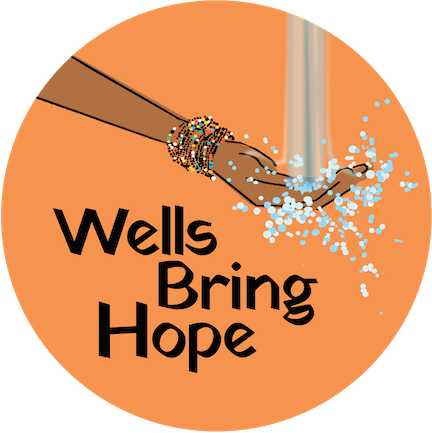by Robyn Dixon, Los Angeles Times
With only five years left to meet the targets of poverty reduction and healthcare improvements set for 2015, most of sub-Saharan Africa lags behind amid the lack of aid and political will.
Sub-Saharan Africa will not reduce poverty and hunger and improve child and maternal healthcare to meet the goals set a decade ago by the United Nations unless African and Western leaders do much more, several recent reports suggest. The main reasons: Donors have failed to keep pledges and many African nations have not improved their governments or increased health spending as promised.
Only a handful of developed countries have met a pledge to increase foreign aid to 0.7% of their gross domestic product, while in some countries aid is declining. And only Rwanda, Tanzania and Liberia have met their pledge to spend 15% of their budgets on health, while in some African nations — Mozambique, Zimbabwe, South Africa and others — the proportion has fallen since 2000, according to a recent report out of Britain.
The average spending on healthcare in sub-Saharan Africa remains less than 10% of GDP. The Millennium Development Goals were adopted by about 190 U.N. member countries in 2000 to tackle poverty, hunger, disease and early deaths in poor countries, with a series of targets set for 2015. The struggling efforts to meet those goals will be discussed at a three-day U.N. summit in New York beginning Monday.
Almost from the outset it was clear that countries and international organizations were not moving fast enough to meet the targets. The eight goals include halving the rate of poverty from 58% of the population in 1990 to 29% in 2015; reducing child mortality by two-thirds from 18% of births in 1990 to 6% in 2015; and cutting maternal mortality from .92% to .23% during the same period. Other goals include providing universal primary education, combating HIV/AIDS and providing universal access to treatment, and eradicating malaria.
“There’s progress, but not at all sufficient if we are to meet the Millennium Development Goals by 2015,” said Elhadj As Sy, the Nairobi-based regional director of UNICEF. “Even in countries where we had a drop in child mortality, in the best cases we saw a reduction of 2.5 or 3% and we need a 5% reduction to meet the targets.” He said the situation is worst in countries mired in conflict, such as Somalia and the Democratic Republic of Congo.
In the 10 years since the goals were set, meeting them has become more complicated, as the global financial crisis plunged an additional 64 million people into extreme poverty, many of them in Africa. Global warming threatens future food production in sub-Saharan Africa, but in the last five years the amount of arable land under irrigation has increased by less than 1%.
The most disappointment has been in the efforts to reduce child and maternal mortality, both of which were to be slashed by two-thirds by 2015. So far, child mortality has been reduced, but 14% of children still die before their fifth birthday. The rate of maternal mortality had barely shifted, according to a U.N. report on the Millennium Development Goals, or MDGs.
There also has been little improvement in the poverty and hunger levels. In 2008, 32% of people in sub-Saharan Africa were undernourished, a proportion little changed since 1990, according to the recent report by Britain’s Commission for Africa. More than 1 billion people worldwide were hungry last year, with insufficient nutrition a key factor in poor health and mortality. Although the proportion living on less than $1.25 a day declined, the overall number in poverty has risen to more than 400 million.
One worrying element, according to analysts, is that the easier improvements — slashing debt, distributing mosquito nets, vaccinating children, improving primary school enrollments — have been carried out in many parts of Africa. With only five years left till 2015, far more challenging programs must be implemented, such as setting up decent health services for women in remote locations and improving the quality of primary education.
The U.S. has released its strategy to reach the goals, including providing an extra $63 billion for healthcare in developing countries, $3.5 billion to help improve agricultural production and $30 billion to help countries adapt to global warming.
“The road ahead will likely be more difficult than the road already traveled,” said a USAID report on meeting the 2015 goals. “To meet the MDGs by 2015, historic leaps in human development will be required. Many of the remaining poor and undernourished will be harder to reach because they live in marginal areas or face ethnic, religious, and other kinds of deep‐seated social exclusion. Some reside in conflict‐affected or fragile states, where the prospects for development are least auspicious.”
Osten Chulu, a policy advisor in Johannesburg to the United Nations Development Program, said the efficient use of aid in Africa was sometimes compromised by poor governance and the extreme disempowerment of populations who are unable to hold leaders accountable through democratic elections. “In Europe and America, a politician is always wary of the reaction of voters,” Chulu said. “But here, it’s the other way around. People are afraid of politicians and civil leaders.”
Chulu said governments in both developed and developing countries had failed in their commitments to meet the U.N. goals. “The question is not so much the money,” he said. “It’s how you use the money.”
This week’s summit is reportedly aiming to generate billions of dollars in pledges of aid. Nongovernmental groups such as Oxfam are calling for a much greater commitment from developed countries. In 2005, the Group of 8 leading industrialized nations promised an extra $50 billion in aid by 2010, but only 61% of it has been delivered.
“Unless an urgent rescue package is developed to accelerate fulfillment of all the MDGs,” a recent Oxfam report said, “we are likely to witness the greatest collective failure in history.”

